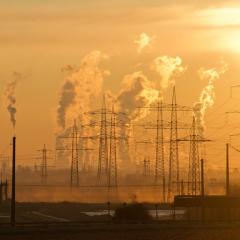 Australia’s new flagship Climate Solutions Fund, announced this week by Prime Minister Scott Morrison, will spend more than A$2 billion on cutting greenhouse emissions by 2030.
Australia’s new flagship Climate Solutions Fund, announced this week by Prime Minister Scott Morrison, will spend more than A$2 billion on cutting greenhouse emissions by 2030.
By Dr Ian A. MacKenzie, Senior Lecturer, School of Economics
While action on climate change is welcomed, this announcement seems to be a faithful reprise of the previous Emissions Reduction Fund, which was beset with problems.
The government has put a new name on an existing scheme, while steadfastly refusing to learn from mistakes made along the way. In cruder terms, it’s slapped a gleaming coat of lipstick onto a pig of a policy.
Add to that the A$1.38 billion pledged today for building the Snowy 2.0 scheme – another plan hatched by one of the government’s former incarnations – and there’s not a lot of imagination on display as Morrison’s government scrambles for some much-needed climate credibility ahead of this year’s election.
Read more: Australia's Emissions Reduction Fund is almost empty. It shouldn't be refilled
Currently Australia’s main tool to try and reduce emissions is the Emissions Reduction Fund (ERF), a “reverse auction” that lets businesses voluntarily reduce pollution and be rewarded with taxpayer cash. Successful bidders for funding have to sign a contract to reduce their pollution over several years.
So far, 193 million tonnes of pollution reduction has been secured at an average cost of A$12 per tonne. In total, around A$2.5bn will have been used to help businesses reduce pollution under the ERF’s original incarnation.
The Climate Solutions Fund is basically a rebranding exercise. It will build on the existing ERF but now expands the scope of participants, including allowing farmers to drought-proof their farms and subsidising businesses to pursue energy-efficiency projects.
Experience tells us it’s a bad idea
The aim for any climate policy should be to reduce our emissions to the agreed 2030 levels at the lowest possible cost. Unfortunately this is unlikely to happen with the Climate Solutions Fund.
This fund will inherit many of the ERF’s existing problems.
One of the ERF’s main issues is with its so-called “safeguard mechanism”. This was set up to ensure that large polluters could not cancel out the progress achieved by the fund’s participants. But this has failed: many large polluters’ “benchmarks” (the amount of emissions they are allowed to release before being penalised) have increased over time and, consequently, much of the work done by the fund has indeed been undone. Because of this, the fund has not given good value for money, despite awarding funding to the lowest bidders.
There are deeper problems. The way the funding is awarded – with public funds going to project proponents who promise to do a good job – the participants inevitably know more about the details of the projects than the government does. This “informational asymmetry” may mean that businesses overquote, asking for more money than they would be prepared to accept.
The successful projects that have signed up may not even be genuinely “additional”, in that they may well have gone ahead regardless of whether or not they won government backing. In other words, we could be paying for something that would have happened anyway!
But we know what works
Economists have known for decades the best way to encourage pollution reduction. It involves putting a price on carbon.
Implementing a carbon tax or (more likely) a carbon trading market will give business the flexibility to choose their own pollution control measures, while also ensuring that overall emissions are reined in.
Read more: One year on from the carbon price experiment, the rebound in emissions is clear
A carbon price will spur industry to invest in cleaner technologies (and increase the potential for jobs growth in these areas) and ensure we meet our climate goals.
Despite prophesies of economic doom, a carbon price can be used to decarbonise the economy, simulate growth in new industries, and redistribute the revenue to ensure equity. It’s using economic levers to help the environment.
Putting lipstick on a pig does not change the fact that it is still a pig.
This article is republished from The Conversation under a Creative Commons license. Read the original article.



